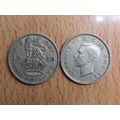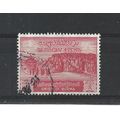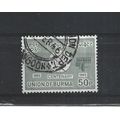Dinant, Belgium - general view c.1910 postcard
- Condition : Used
- Dispatch : 2 Days
- Brand : None
- ID# : 33021107
- Quantity : 1 item
- Views : 630
- Location : United Kingdom

- Seller : justthebook (+1704)
- Barcode : None
- Start : Sun 24 Oct 2010 19:51:08 (BST)
- Close : Run Until Sold
- Remain : Run Until Sold
More Listings from This Seller view all
Seller's Description
- Postcard
- Picture / Image: General View of Dinant, Belgium
- Publisher: A & C Black, London - from the book 'Belgium' by A. Forestier & GTW Omond
- Postally used: no
- Stamp: n/a
- Postmark(s): n/a
- Sent to: n/a
- Notes & Key words:
------------------------------------------------
Postage & Packing:
UK (incl. IOM, CI & BFPO): 99p
Europe: £1.60
Rest of world (inc. USA etc): £2.75
No additional charges for more than one postcard. You can buy as many postcards from me as you like and you will just pay the fee above once. (If buying postcards with other things such as books, please contact or wait for invoice before paying).
Payment Methods:
UK - PayPal, Cheque (from UK bank) or postal order
Outside UK: PayPal or Google Checkout ONLY please. NO non-UK currency checks or money orders (sorry).
NOTE: All postcards are sent in brand new stiffened envelopes which I have bought for the task. These are specially made to protect postcards and you may be able to re-use them. In addition there are other costs to sending so the above charge is not just for the stamp!
----------------------------------------------
Text from the free encyclopedia WIKIPEDIA may appear below to give a little background information:
*************
Dinant is a Walloon city and municipality located on the River Meuse in the Belgian province of Namur, Belgium. The Dinant municipality includes the old communes of Anseremme, Bouvignes-sur-Meuse, Dréhance, Falmagne, Falmignoul, Foy-Notre-Dame, Furfooz, Lisogne, Sorinnes, and Thynes.
The Dinant area was already populated in Neolithic, Celtic, and Roman times. The first mention of Dinant as a settlement dates from the 7th century, a time at which Saint Perpete, bishop of Tongeren (with see now at Maastricht), took Dinant as his residence and founded the church of Saint Vincent. In 870, Charles the Bald gave part of Dinant to be administered by the Count of Namur, the other part by the bishop of Tongeren, then Liège. In the 11th century, the emperor Henry IV granted several rights over Dinant to the Prince-Bishop of Liège, including market and justice rights. From that time on, the city became one of the 23 ‘’bonnes villes’’ (or principal cities) of the Bishopric of Liège. The first stone bridge on the Meuse and major repair to the castle, which had been built earlier, also date from the end of the 11th century. Throughout this period, and until the end of the 18th century, Dinant shared its history with its overlord Liège, sometimes raising in revolt against it, sometimes partaking in its victories and defeats, mostly against the neighbouring County of Namur.
Its strategic location on the Meuse exposed Dinant to battle and pillage, not always by avowed enemies: in 1466, Philip the Good, Duke of Burgundy, uncle of Louis de Bourbon, Prince-Bishop of Liège, and Philip’s son Charles the Bold punished an uprising in Dinant by casting 800 burghers into the Meuse and setting fire to the city. The city's economic rival was Bouvignes, downriver on the opposite shore of the Meuse.
Late Medieval Dinant and Bouvignes specialized in metalwork, producing finely cast and finished objects in a silvery brass alloy, called dinanderie and supplying aquamaniles, candlesticks, patens and other altar furniture throughout the Meuse valley (giving these objects their cautious designation "Mosan"), the Rhineland and beyond. Henri Pirenne gained his doctorate in 1883 with a thesis on medieval Dinant.
the 16th- and 17th-century wars between France and Spain, Dinant suffered destruction, famine and epidemics, despite its neutrality. In 1675, the French army under Marshal François de Créquy occupied the city. Dinant was briefly taken by the Austrians at the end of the 18th century. The whole Bishopric of Liège was ceded to France in 1795. The dinanderies fell out of fashion and the economy of the city now rested on leather tanning and the manufacture of playing cards. The famous couques de Dinant also appeared at that time.
The city suffered devastation again at the beginning of the First World War. On 23 August, 674 inhabitants were summarily executed by saxon troops of the German army. It was the biggest of the massacres committed by the Germans in 1914. Within a month, some five thousand Belgian and French civilians were killed by the Germans at numerous similar occasions, which led to the decision by millions of people in 1940 to flee at the first signs of fighting.[1]
- The city's landmark is the Collegiate Church of Notre-Dame (illustration, right), rebuilt in Gothic style on its old foundations after falling rocks from an adjacent cliff partially destroyed the former Romanesque church in 1227. Several stages for paired west end towers were completed before the project was abandoned in favor of the present central tower with its highly-recognizable onion dome and facetted multi-staged lantern.
- Above the church rises the vertical flank of the rocher surmounted by the fortified Citadel that was first built in the 11th century to control the Meuse valley. The Prince-Bishops of Liège rebuilt and enlarged it in 1530; the French destroyed it in 1703. Its present aspect, with the rock-hewn stairs (408 steps), is due to rebuilding in 1821, during the United Kingdom of the Netherlands phase of Dinant's checkered history. Further fighting took place during the World War I: among the wounded was Lieut. Charles de Gaulle.
- Apart from the main block is the Rocher Bayard that would have been split by the giant hoof of Bayard, the horse carrying the four sons of Aymon on their legendary flight from Charlemagne through the Ardennes, told in a famous 12th-century chanson de geste.
Listing Information
| Listing Type | Gallery Listing |
| Listing ID# | 33021107 |
| Start Time | Sun 24 Oct 2010 19:51:08 (BST) |
| Close Time | Run Until Sold |
| Starting Bid | Fixed Price (no bidding) |
| Item Condition | Used |
| Bids | 0 |
| Views | 630 |
| Dispatch Time | 2 Days |
| Quantity | 1 |
| Location | United Kingdom |
| Auto Extend | No |




 for 1 item(s)
for 1 item(s)







![IRLAND IRELAND [1974] MiNr 0298 XA ( O/used )](https://pic.ebid.net/upload_small/2/2/3/1485860675-20987-4.jpg)









